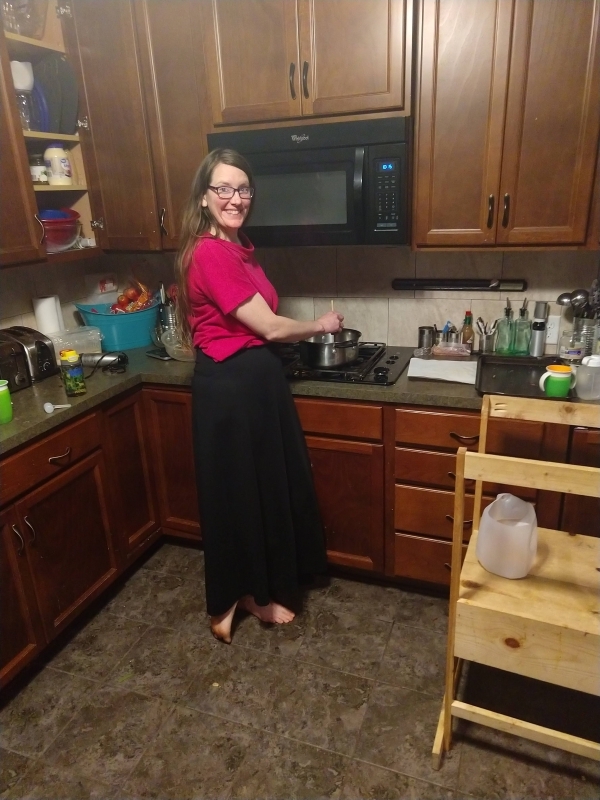A rush of water and blood, spilling onto the floor, soaking my socks. Did he really break my waters while I was leaning over the side of the bed? That’s how I remember it. The blood, the water, and absolutely overwhelming intensity.
There would be no laboring down, no rest for me.
Are you feeling lost? Maybe you’d like to read part 1, part 2, part 3, part 4, part 5, part 6, part 7, and part 8 of Beth-Ellen’s birth story
Two, maybe three contractions and I was pushing.
The room buzzed full of people, not that I was paying any attention.
Someone was frantic. “She’s pushing. Somebody get Dr. Jensen in here.”
Another person remarked that my OB slept in his office (or something like that) when he had a woman in labor – so he should be able to get here soon. Even so, they were convinced that delivery was imminent.
And it was.
I don’t know how long I pushed, but it wasn’t terribly long.
I pooped. I know because I did not at all like the dry washcloth they used to wipe it away.
Baby was crowning and someone encouraged me to feel the head. I reached down and found that it was not at all what I expected – it felt like the rough edge of an almond. In the rare moments between contractions, I contemplated that what I had felt must have been the edge of her head’s plates.
A giant push. Her head was out.
And then she was out.
A girl. Beth-Ellen Irene, I announced.
Someone helped me into bed so I could place Beth-Ellen on my chest. They covered us with a blanket – necessary since I’d shed all my clothing somewhere along the line. All my clothing except those now-bloody socks. Someone took them off now, asked if I wanted to keep them or just toss them. My brain wasn’t working just then, so I delayed the decision. Keep them. (Once we were home from the hospital, I threw them away, still sealed in the biohazard bag they’d been placed in.)
Beth-Ellen lay between my breasts. I was just so delighted to have her. To have her vaginally. To have her naturally. To have defied the odds.
I was also exhausted and unprepared for the “clean up.”
People talk of how the hormones flood a woman’s system, making her barely notice the third stage. And maybe they’re right. I have no memory of expelling the placenta. I barely took note when Doctor Jensen said the cord was no longer needed (In retrospect, why? Was it because it had stopped pulsating? Was it because the placenta had been delivered by then?) Someone asked Daniel if he wanted to cut the cord. He’d always been ambivalent when we’d discussed it, so I was a little surprised when he assented and did it.
But even if hormones blunted my experience of the third stage, they did little to save me from what was to come.
Beth-Ellen on my chest meant I needed to stay on the bed, couldn’t jump out of it at the extreme discomfort that was a manual inspection of my uterine scars. It was necessary to check that I hadn’t ruptured. It’s better to find out about that sort of thing sooner rather than later. But boy, that was not fun.
And then came the stitches. I had lidocaine for them, but that doesn’t mean it was pleasant. I only had superficial tears, but there were several, so the stitching took a long time.
I handed Beth-Ellen over to be bathed and weighed. I put on a clean hospital gown. The nurse returned Beth-Ellen to me and we went to our postpartum room together.
And here’s the very best part – we’ve been together ever since.

